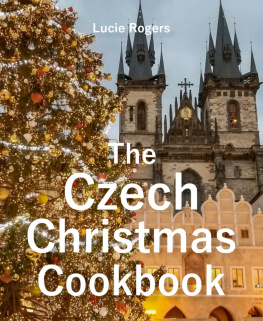
Copyright 2020 by Alex Palmer
Cover and interior illustrations copyright 2020 by Neil Stevens
Cover copyright 2020 by Hachette Book Group, Inc.
Hachette Book Group supports the right to free expression and the value of copyright. The purpose of copyright is to encourage writers and artists to produce the creative works that enrich our culture.
The scanning, uploading, and distribution of this book without permission is a theft of the authors intellectual property. If you would like permission to use material from the book (other than for review purposes), please contact permissions@hbgusa.com. Thank you for your support of the authors rights.
Running Press
Hachette Book Group
1290 Avenue of the Americas, New York, NY 10104
www.runningpress.com
@Running_Press
First Edition: October 2020
Published by Running Press, an imprint of Perseus Books, LLC, a subsidiary of Hachette Book Group, Inc. The Running Press name and logo is a trademark of the Hachette Book Group.
The Hachette Speakers Bureau provides a wide range of authors for speaking events. To find out more, go to www.hachettespeakersbureau.com or call (866) 376-6591.
The publisher is not responsible for websites (or their content) that are not owned by the publisher.
Library of Congress Control Number:2020936262
ISBNs: 978-0-7624-7039-6 (hardcover), 978-0-7624-7040-2 (ebook)
E3-20200821-JV-NF-ORI
I f you picked up this book, there is probably something you love about Christmas: a certain song that gets played every year, a special cookie your grandmother baked during the season, or just the simple scent of evergreen that fills the stores and city streets. Whatever your age, interests, or religious affiliation, there is some Christmas tradition that appeals to you. Its a holiday that offers something for everyoneeven self-proclaimed Scrooges.
Thats true throughout the world, too. More than any other holiday, Christmas has been adapted and interpreted by different countries and communities to suit their particular culture. Santa Claus may be the holiday heavyweight in North America, but in many Spanish-speaking countries, kids stay up late waiting for the three Wise Men, while Italians look for a jolly lady riding a broomstick. You might kick off the season by putting up a Christmas tree in your living room, but for others, the must-have decoration might be a goat made of straw, a sparkly spiderweb, or a log with a smiley face that poops candy (see for more about him).
Christmas celebrations around the world are as distinctive, varied, and surprising as the people themselves. In this book, Ive set out to capture this range in all its rich variety and explore how a tradition, whether a colorful ornament or peculiar character, tells a much deeper story about that country or culture. And while The Atlas of Christmas is by no means comprehensive, it does aim to offer an entertaining survey of the many ways Christmas is honored the world overwhether extravagant or intimate, sacred or silly.
There are so many reasons to celebrate the Christmas season. So grab a mug of hot chocolate and your favorite Christmas sweaterunless you live in one of the many places where Christmas takes place during the summer, in which case, grab your best Santa sunglassesand get ready for some festive fun.
Merry Christmas!
AlbanianGzuar Krishtlindjet
CroatianSretan Bozic
DanishGldelig jul
DutchZalig Kerstfeest
EstonianRmsaid Jule
FarsiCristmas mobArak
GermanFrohe Weihnachten
GreekEftihismena Christougenna
HindiShub Naya Baras
IcelandicGleileg jl
IrishNollaig shona dhuit
ItalianBuon Natale
JapaneseMerii Kurisumasu
KoreanSung Tan Chuk Ha
MandarinKung His Hsin Nien bing Chu Shen Tan
PolishWesolych swiat
PortugueseBoas-festas
RomanianCraciun fericit
RussianSchastlivogo Rozhdestva
SpanishFeliz Navidad
VietnameseChuc mung Giang Sinh
While Christmas began as a day to honor the birth of Jesus, just how this is done has grown and evolved in some surprising ways throughout the world. The approaches that different countries take to recognizing the season reflect their particular history and heritage, and how cultures adapt the same materials to suit their own place.

T he story of Christs birth remains the central focus of Christmas celebrations throughout Latin America and Spanish-speaking parts of the world. But while nativity scenes and tributes to the Virgin Mary and Wise Men are widespread, the people of Mexico take a slightly different path in honoring the tale. A man and woman dress up as Joseph and Mary and reenact the search for lodging on the night when Jesus was born. The couple, often played by adolescents, leads a procession of children costumed in silver and gold robes as well as musicians and other parishioners to a predesignated house. This is the posada, or inn, and the residents take on the role of skeptical innkeepers of Bethlehem. They greet the visitors at the door, listen as the couple explains their plight, and reluctantly refuse them entry. But after some further back-and-forth, typically in song or verse, the innkeepers finally recognize the holy couple and warmly allow them inside.

The whole procession moves indoors, where participants gather around the nativity scene to pray, read scripture, and sing carols before moving on to the next posadaoften visiting three or four homes in a night. From the last posada, everyone heads to Mass, after which they cut loose with a more relaxed party that usually includes feasting on tamales, pan dulce, and champurrado (a corn-based hot chocolate popular in Mexico) while the children take shots at a clay piata full of candy and fruit.
While some celebrate las posadas only on Christmas Eve, many perform the ritual every night from December 16 to December 24nine nights, representing the nine months of Marys pregnancy. The specific songs may vary and for some performances, Joseph and Mary may even ride atop donkeys or incorporate other dramatic elements. The tradition dates back to at least the seventeenth century, introduced by Augustinian missionaries as a Christian alternative to the Aztec custom of celebrating the god Huitzilopochtli at about the same time of year. The practice grew more popular over time and spread throughout Latin America. The performance of requesting and being granted shelterafter several denialshas particular resonance for Mexican American immigrant communities of the United States.

















